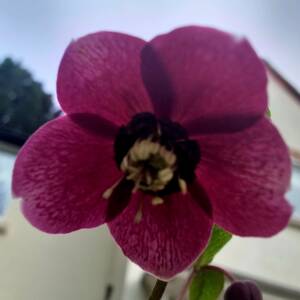The Hilda of Hildasrose
PaulaJ has had two really interesting Blips here about St Hilda so I thought I would show you the banner which hangs in the church I attend, St Hilda's, Warley Woods. A long way from Northumbria and Hilda! People ask me why my Blipname is Hildasrose, so I explain that it was the vicar of St Hilda's who introduced me to Blipfoto and on that first day when I hadn't got a clue what I was doing and I had to give myself a name, Hildasrose was what came to me!
That was nearly four years ago now!
"Hilda was a grandniece of King Edwin of Northumbria and daughter of Hereric. Hild is her correct name and means ‘battle’. Both she and her uncle were baptized by Saint Paulinus at York in 627, when she was 13.
She lived the life of a noblewoman until 20 years later she decided to join her sister Saint Hereswitha at the Chelles Monastery as a nun in France. In 649, Saint Aidan requested that she return to Northumbria as abbess of the double monastery (with both men and women, in separate quarters) in Hartlepool by the River Wear.
After some years Saint Hilda migrated as abbess to the double monastery of Whitby at Streaneshalch, which she governed for the rest of her life. Among her subject monks were Bishop Saint John of Beverly, the herdsman Caedmon (the first English religious poet), Bishop Saint Wilfrid of York, and three other bishops.
At the conference she convened in 664 at Whitby Abbey to decide between Celtic and Roman ecclesiastical customs, Saint Hilda supported the Celtic party. Nevertheless, she and her communities adhered to the decision of the Council of Whitby to observe the Roman rule and customs. Her influence was certainly one of the decisive factors in securing unity in the English Church.
Hilda became known for her spiritual wisdom and her monastery for the calibre of its learning and its nuns. Saint Bede is enthusiastic in his praise of Abbess Hilda, one of the greatest Englishwomen of all time: she was the adviser of rulers as well as of ordinary folk; she insisted on the study of Holy Scripture and on proper preparation for the priesthood; the influence of her example of peace and charity extended beyond the walls of her monastery; all who knew her called her Mother, such were her wonderful godliness and grace'
On 17 November 680, after six years of illness, she died in Whitby. Sensing the nearness of death, she took early Communion and called her followers round her and urged them to uphold the peace of Christ with each other: indeed, with all the world. And while she was still speaking, she welcomed death with joy. Or rather, in the words of Our Lord, she passed from death to everlasting life.
Saint Hilda is represented in art holding Whitby Abbey in her hands with a crown on her head or at her feet. Sometimes she is shown (1) turning serpents into stone; (2) stopping the wild birds from ravaging corn at her command; or (3) as a soul being carried to heaven by the angels."

Comments
Sign in or get an account to comment.


